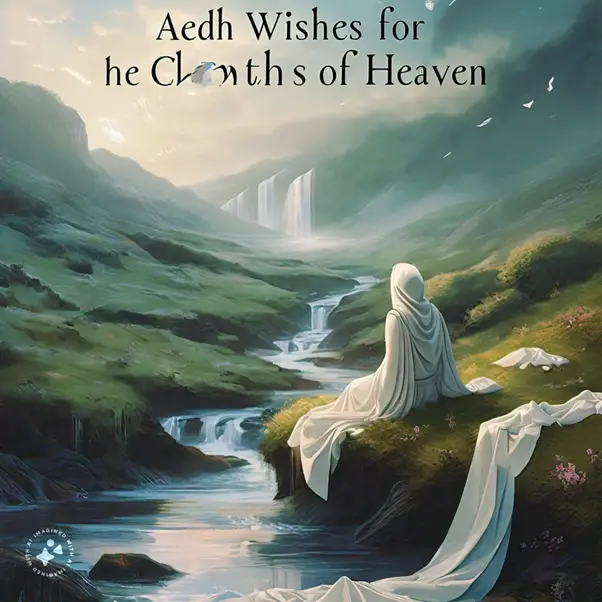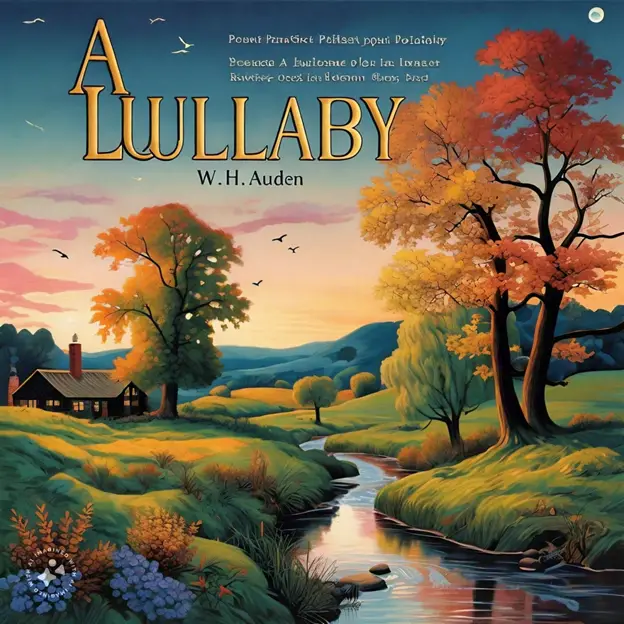
Introduction: “A Valentine” by Edgar Allan Poe
“A Valentine” by Edgar Allan Poe was initially published in the Evening Mirror newspaper in 1846, and subsequently included in the 1849 edition of Sartain’s Union Magazine. This unique poem is constructed as an acrostic, with the first letter of each line spelling out the name of its intended recipient, Frances Sargent Osgood. Poe’s ingenious use of this form, combined with his evocative language and imagery, create a captivating atmosphere of mystery and romance. While the poem’s surface level presents a riddle, its deeper meaning reveals a heartfelt expression of love and admiration for Osgood. The enduring appeal of “A Valentine” lies in its masterful fusion of poetic structure, hidden message, and genuine emotion.
Text: “A Valentine” by Edgar Allan Poe
For her this rhyme is penned, whose luminous eyes,
Brightly expressive as the twins of Loeda,
Shall find her own sweet name, that, nestling lies
Upon the page, enwrapped from every reader.
Search narrowly the lines!—they hold a treasure
Divine—a talisman—an amulet
That must be worn at heart. Search well the measure—
The words—the syllables! Do not forget
The trivialest point, or you may lose your labor!
And yet there is in this no Gordian knot
Which one might not undo without a sabre,
If one could merely comprehend the plot.
Enwritten upon the leaf where now are peering
Eyes scintillating soul, there lie perdus
Three eloquent words oft uttered in the hearing
Of poets, by poets—as the name is a poet’s, too.
Its letters, although naturally lying
Like the knight Pinto—Mendez Ferdinando—
Still form a synonym for Truth—Cease trying!
You will not read the riddle, though you do the best you can do.
Annotations: “A Valentine” by Edgar Allan Poe
| Line | Annotation |
| For her this rhyme is penned, whose luminous eyes, | The poem is written for a woman with bright, expressive eyes. |
| Brightly expressive as the twins of Loeda, | Her eyes are compared to the twin stars Castor and Pollux, also known as the Dioscuri or sons of Leda. |
| Shall find her own sweet name, that, nestling lies | Her name is hidden within the poem. |
| Upon the page, enwrapped from every reader. | The name is concealed in such a way that it is not immediately obvious to readers. |
| Search narrowly the lines!—they hold a treasure | Readers are encouraged to closely examine the lines for a hidden treasure (her name). |
| Divine—a talisman—an amulet | The hidden name is described as something precious and magical. |
| That must be worn at heart. Search well the measure— | The name should be cherished, and readers should carefully examine the poem’s structure. |
| The words—the syllables! Do not forget | Every detail, including words and syllables, is important in the search for the name. |
| The trivialest point, or you may lose your labor! | Missing even the smallest detail could result in failure to find the name. |
| And yet there is in this no Gordian knot | The riddle is not impossible to solve, unlike the legendary Gordian knot. |
| Which one might not undo without a sabre, | The solution does not require force or violence, just understanding. |
| If one could merely comprehend the plot. | Understanding the poem’s structure is key to solving the riddle. |
| Enwritten upon the leaf where now are peering | The name is hidden on the page where her eyes seem to be looking. |
| Eyes scintillating soul, there lie perdus | Her eyes, full of life, are metaphorically peering at the hidden words. |
| Three eloquent words oft uttered in the hearing | The hidden name consists of three words that are often spoken by and to poets. |
| Of poets, by poets—as the name is a poet’s, too. | The name belongs to a poet or is poetic itself. |
| Its letters, although naturally lying | The letters of the name are in their natural order within the poem. |
| Like the knight Pinto—Mendez Ferdinando— | A reference to a historical figure, suggesting the name is exotic or notable. |
| Still form a synonym for Truth—Cease trying! | The name is synonymous with truth, implying honesty or clarity. |
| You will not read the riddle, though you do the best you can do. | Despite effort, the reader might still fail to uncover the hidden name. |
Literary And Poetic Devices: “A Valentine” by Edgar Allan Poe
Acrostic: A poem or other form of writing in which the first letter, syllable, or word of each line, paragraph, or other recurring feature spells out a word or message.
Example: The first letter of each line in the poem spells the name “Frances Sargent Osgood.”
Explanation: This device serves as a hidden message, adding a layer of intrigue and mystery to the poem.
Alliteration: The repetition of consonant sounds at the beginning of words or stressed syllables.
Example: “Brightly expressive as the twins of Loeda.”
Explanation: Creates a musical effect and emphasizes certain words or phrases.
Allusion: A reference to a person, place, thing, or idea of historical, cultural, literary, or political significance.
Example: “twins of Loeda” (a reference to the mythological twins Castor and Pollux).
Explanation: Enhances the poem’s meaning by drawing on the reader’s knowledge of external sources.
Anaphora: The repetition of a word or phrase at the beginning of successive clauses or sentences.
Example: “Search narrowly the lines!—they hold a treasure… Search well the measure—”
Explanation: Creates emphasis and a sense of rhythm.
Consonance: The repetition of consonant sounds within or at the end of words.
Example: “nestling lies”
Explanation: Creates a pleasing sound effect and reinforces the meaning of the words.
Enjambment: The continuation of a sentence without a pause beyond the end of a line, couplet, or stanza.
Example: “Upon the page, enwrapped from every reader. / Search narrowly the lines!—”
Explanation: Creates a sense of fluidity and movement in the poem.
Hyperbole: Exaggerated statements or claims not meant to be taken literally.
Example: “You will not read the riddle, though you do the best you can do.”
Explanation: Adds emphasis and drama to the poem.
Imagery: Visually descriptive or figurative language, especially in a literary work.
Example: “luminous eyes”
Explanation: Creates a vivid picture in the reader’s mind and evokes emotions.
Internal Rhyme: A rhyme involving a word in the middle of a line and another at the end of the line or in the middle of the next.
Example: “Upon the page, enwrapped from every reader.”
Explanation: Enhances the poem’s musicality and creates a sense of unity.
Irony: The expression of one’s meaning by using language that normally signifies the opposite, typically for humorous or emphatic effect.
Example: “You will not read the riddle, though you do the best you can do.”
Explanation: Creates a playful tone and engages the reader.
Metaphor: A figure of speech in which a word or phrase is applied to an object or action to which it is not literally applicable.
Example: “Eyes scintillating soul”
Explanation: Creates a vivid image and conveys a deeper meaning.
Meter: The rhythmical pattern of stressed and unstressed syllables in a verse.
Example: The poem follows a consistent iambic tetrameter pattern.
Explanation: Creates a sense of rhythm and musicality.
Oxymoron: A figure of speech in which apparently contradictory terms appear in conjunction.
Example: “trivialest point”
Explanation: Creates a sense of paradox and draws attention to the phrase.
Personification: The attribution of a personal nature or human characteristics to something nonhuman.
Example: “Eyes scintillating soul”
Explanation: Makes the poem more engaging and relatable.
Repetition: The action of repeating something that has already been said or written.
Example: “Search narrowly the lines!—they hold a treasure… Search well the measure—”
Explanation: Creates emphasis and a sense of rhythm.
Rhyme Scheme: The ordered pattern of rhymes at the ends of the lines of a poem or verse.
Example: ABAB CDCD EFEF GHGH
Explanation: Creates a sense of musicality and structure.
Simile: A figure of speech involving the comparison of one thing with another thing of a different kind, used to make a description more emphatic or vivid.
Example: “Brightly expressive as the twins of Loeda”
Explanation: Creates a vivid image and helps the reader understand the comparison.
Symbolism: The use of symbols to represent ideas or qualities.
Example: “talisman,” “amulet”
Explanation: Adds depth and layers of meaning to the poem.
Tone: The general character or attitude of a place, piece of writing, situation, etc.
Example: Playful, mysterious, romantic
Explanation: Sets the mood of the poem and influences the reader’s interpretation.
Themes: “A Valentine” by Edgar Allan Poe
- Love as a Treasure Hunt: The poem presents love as a hidden treasure to be discovered. Poe compares the woman’s name to a “treasure,” “talisman,” and “amulet” that lies hidden within the lines of the poem. This suggests that love is not always obvious and requires effort and attention to uncover its true value. The reader is encouraged to “search narrowly the lines” and pay attention to even the “trivialest point” in order to find the hidden treasure of the woman’s name.
- The Power of Words: Poe highlights the power of words to convey meaning, emotion, and even love itself. The poem is a puzzle of words, with the woman’s name encoded within the lines. This demonstrates how words can be used to conceal and reveal, to express hidden feelings, and to create a sense of mystery and intrigue. The “three eloquent words” that form a synonym for truth are a testament to the potency of language to convey deep emotions.
- The Enigma of Identity: The poem explores the theme of identity through the hidden name of the woman. The reader is challenged to decipher the acrostic and discover her identity. This suggests that identity is not always readily apparent and may require deeper understanding and interpretation. The line “you will not read the riddle, though you do the best you can do” implies that understanding another person’s true identity is a complex and often elusive endeavor.
- Romantic Admiration and Courtship: Poe’s poem is a testament to his admiration for Frances Sargent Osgood. He compares her eyes to the “twins of Loeda” and her name to a “treasure” and “amulet,” emphasizing her beauty and value. The act of writing the poem itself is a form of romantic courtship, as Poe attempts to win Osgood’s affection through his clever wordplay and hidden message. The poem’s playful and flirtatious tone reflects the excitement and anticipation of a budding romance.
Literary Theories and “A Valentine” by Edgar Allan Poe
| Literary Theory | Key Concepts | Analysis of “A Valentine” by Edgar Allan Poe |
| Formalism | Focuses on the text itself, its structure, form, and | “A Valentine” consists of four quatrains with a consistent ABAB rhyme scheme. The poem’s tight structure contributes to its rhythmic flow and creates a sense of control and order. The language is rich in imagery and symbolism, such as “seraph,” “adorer,” and “mortal.” These literary devices enhance the aesthetic appeal and contribute to the poem’s thematic depth. |
| Psychoanalytic Criticism | Explores the unconscious elements of the text, | The poem can be interpreted as an expression of the speaker’s inner conflicts and desires. The repetition of “For her this rhyme is penned” suggests an obsessive fixation on the beloved, possibly stemming from unresolved childhood experiences or traumas. The contrast between heavenly imagery (“seraph,” “adorer”) and earthly concerns (“care,” “fear,” “sorrow”) reflects the speaker’s internal struggle between idealized love and mundane reality. The poem’s melancholic tone and references to death (“The tomb,” “the pall”) hint at repressed anxieties and existential dread. |
| Reader-Response Criticism | Emphasizes the role of the reader in interpreting | The reader’s interpretation of “A Valentine” depends on their personal experiences, beliefs, and emotions. Some may view the poem as a romantic declaration of love, appreciating its lyrical language and heartfelt sentiment. Others may perceive it as a critique of idealized love, noting the speaker’s fixation on death and the contrast between heavenly and earthly imagery. Readers may project their own interpretations onto the poem, finding resonance with themes of longing, mortality, and the transient nature of love. |
Critical Questions about “A Valentine” by Edgar Allan Poe
Question 1: What is the central theme of the poem, and how does Poe use imagery to convey it?
The poem explores the idea of a hidden message or treasure within the lines, with the speaker urging the reader to “Search narrowly the lines!—they hold a treasure / Divine—a talisman—an amulet” (lines 5-6). Poe uses imagery, such as the comparison of the beloved’s eyes to the “twins of Loeda” (line 2), to create a sense of mystery and allure, drawing the reader into the search for the hidden meaning.
Question 2: How does Poe use wordplay and clever language to create a sense of puzzle-solving in the poem?
Poe employs wordplay and clever language throughout the poem, such as the use of “perdus” (line 13) and the comparison of the letters to “the knight Pinto—Mendez Ferdinando—” (line 17). He also creates a sense of puzzle-solving by instructing the reader to “Search well the measure— / The words—the syllables!” (lines 7-8), and then declaring that the answer is not as difficult as a “Gordian knot” (line 9).
Question 3: What is the significance of the “three eloquent words” mentioned in the poem, and how do they relate to the theme of truth?
The “three eloquent words” (line 13) are revealed to be a synonym for Truth, with Poe stating “Still form a synonym for Truth—Cease trying! / You will not read the riddle, though you do the best you can do” (lines 19-20). This suggests that the poem is not just a playful puzzle, but also a meditation on the nature of truth and how it can be hidden in plain sight.
Question 4: How does the poem’s use of address and direct speech contribute to its sense of intimacy and playfulness?
The poem is addressed to a specific beloved, with the speaker using direct speech to urge them to search for the hidden message. This creates a sense of intimacy and playfulness, as if the speaker is sharing a secret with the reader. The use of direct speech also adds to the sense of puzzle-solving, as the reader feels like they are being guided through the process by the speaker.
Topics, Questions and Thesis Statement about “A Valentine” by Edgar Allan Poe
| Topic | Questions | Thesis Statement |
| Romantic Idealization | 1. How does the speaker idealize the beloved in “A Valentine”? | Edgar Allan Poe’s “A Valentine” portrays the speaker’s idealization of love through heavenly imagery and lyrical language, revealing the romanticized perception of the beloved as an ethereal being. |
| Death and Love | 1. How does the theme of death intersect with the theme of love in the poem? | “A Valentine” by Edgar Allan Poe explores the complex relationship between love and mortality, juxtaposing themes of longing and desire with imagery of decay and loss, ultimately suggesting that love transcends the boundaries of life and death. |
| Symbolism and Imagery | 1. What symbolic significance do elements like the “seraph” and “tomb” hold in the poem? | Through rich symbolism and vivid imagery, “A Valentine” by Edgar Allan Poe evokes a sense of longing and melancholy, employing celestial and funereal imagery to convey the speaker’s emotional turmoil and the ephemeral nature of love. |
| Psychological Analysis | 1. How does the speaker’s psyche manifest through the poem’s language and tone? | By delving into the psyche of the speaker, “A Valentine” by Edgar Allan Poe reveals underlying themes of obsession, longing, and existential dread, offering insight into the complexities of human emotions and the darker aspects of romantic love. |
Literary Works Similar to “A Valentine” by Edgar Allan Poe
- “Annabel Lee” by Edgar Allan Poe: This poem, written by the same author, explores themes of love, loss, and mortality. Like “A Valentine,” it features a melancholic tone and uses lyrical language to evoke emotions.
- “She Walks in Beauty” by Lord Byron: Lord Byron’s poem celebrates the beauty and grace of a woman, much like the admiration expressed in “A Valentine.” Both poems employ romantic imagery and convey a sense of idealized love.
- “The Raven” by Edgar Allan Poe: While “The Raven” is known for its dark and haunting atmosphere, it shares with “A Valentine” Poe’s mastery of language and rhythm. Both poems delve into themes of longing and obsession.
- “Love’s Philosophy” by Percy Bysshe Shelley: Shelley’s poem explores the connection between love and nature, similar to the natural imagery used in “A Valentine.” Both works contemplate the universal aspects of love and desire.
- “To One in Paradise” by Edgar Allan Poe: Another poem by Poe, “To One in Paradise” shares with “A Valentine” a sense of longing and idealization. Both poems express the speaker’s yearning for a transcendent love beyond earthly existence.
Suggested Readings: “A Valentine” by Edgar Allan Poe
Books:
- Meyers, Jeffrey. Edgar Allan Poe: His Life and Legacy. Cooper Square Press, 1992.
- Quinn, Arthur Hobson. Edgar Allan Poe: A Critical Biography. Johns Hopkins University Press, 1998.
- Silverman, Kenneth. Edgar A. Poe: Mournful and Never-ending Remembrance. Harper Perennial, 1991.
Articles:
- Kopley, Richard and Kevin J. Hayes. “‘The Beautiful Cigar Girl’ as Composite Biography.” Poe Studies, vol. 40, no. 2, 2008, pp. 147–171.
- Thomas, Dwight & David K. Jackson. The Poe Log: A Documentary Life of Edgar Allan Poe, 1809-1849. G.K. Hall & Co., 1987.
Web Links:
- Edgar Allan Poe Society of Baltimore: https://www.eapoe.org/
- The Poe Museum: https://www.poemuseum.org/
- Poetry Foundation: https://www.poetryfoundation.org/poets/edgar-allan-poe
Representative Quotations from “A Valentine” by Edgar Allan Poe
| Quotation | Context | Theoretical Perspective |
| “For her this rhyme is penned, whose luminous eyes, / Brightly expressive as the twins of Loeda,” | The poem’s opening lines, addressing the beloved | Feminist Criticism: Poe’s objectification of the beloved’s eyes, reducing her to a physical attribute, raises questions about gender dynamics and the male gaze. |
| “Search narrowly the lines!—they hold a treasure / Divine—a talisman—an amulet” | The speaker urges the reader to search for a hidden message | Semiotics: Poe’s use of codes and hidden meanings reflects his interest in the power of language to conceal and reveal truth, highlighting the reader’s role as active interpreter. |
| “Enwritten upon the leaf where now are peering / Eyes scintillating soul, there lie perdus” | The speaker hints at a hidden message in the poem | Poststructuralism: Poe’s playful use of language and concealment of meaning challenges the idea of a fixed, stable text, instead embracing the instability and multiplicity of meaning. |
| “Three eloquent words oft uttered in the hearing / Of poets, by poets—as the name is a poet’s, too” | The speaker reveals the hidden message is a synonym for Truth | Romanticism: Poe’s emphasis on the poet’s role in revealing Truth reflects the Romantic ideal of the poet as seer and truth-teller, highlighting the connection between art and truth. |
| “You will not read the riddle, though you do the best you can do” | The speaker’s final statement, acknowledging the reader’s limitations | Reader-Response Theory: Poe’s acknowledgement of the reader’s agency and limitations highlights the interactive nature of reading, where meaning is co-created by the reader and text. |








